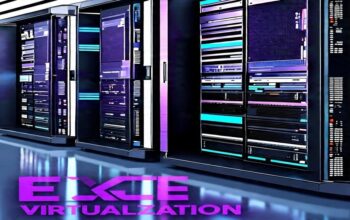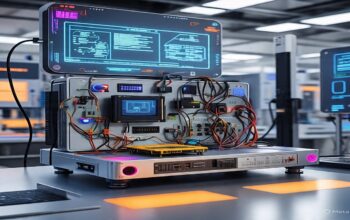Introduction to Quantum Computing and Silicon’s Limitations
Quantum computing is one of the most revolutionary technologies of the 21st century. The classical computer reads information in binary form (0 or 1). Quantum computers, on the other hand, depend on qubits—an entity that exploits superposition and entanglement to undertake complex calculations at incredible speeds. They have a great chance of solving problems in cryptography, drug discovery, climate modeling, and artificial intelligence, among many other ventures and transforming many areas.
Currently, most quantum computers use silicon-based qubits, adhering to legacy semiconductor technology that has driven the development of classical computing over decades. Still, despite progress made, silicon has limitations when applied to quantum systems: it has issues of scalability due to coherence—namely, the stability of quantum states is exponentially more difficult for quantum computers as the qubit count increases.
Decoherence and Error Rates:
Quantum states are very sensitive, and interactions with their environment cause decoherence, which leads to computational errors.
Energy and Cooling Requirements:
Most silicon-based quantum computers require near-absolute-zero temperatures (-273°C) to function effectively, making them expensive and impractical for widespread adoption.
These challenges have led researchers to explore alternative materials for quantum computing, and one unexpected candidate has emerged—DNA.
Covered Contents
ToggleDNA’s Unique Properties for Quantum Applications
DNA is the most basic molecule of life, exhibiting exceptional structural and chemical properties, making it an exciting candidate for quantum computing. DNA’s application in quantum concepts can be drawn from the following sources:
Molecular Precision and Self-Assembly:
The molecules of DNA are very precise at the nanoscale and are capable of self-assembling to form complex structures. Scientists can assemble molecular circuits and nanowires for quantum computing applications. Moreover, unlike silicon, which must be fabricated by sophisticated lithographic techniques to fabricate a chip, DNA-based structures can emerge naturally and very precisely.
Information Storage Capacity:
DNA is an excellent information storage medium. Theoretically, 215 petabytes (215 million gigabytes) of data may be stored in a gram of DNA. This ability is much greater than traditional silicon-based storage and may allow quantum computers to process and retain large datasets.
Potential for Quantum Coherence:
According to certain studies, biological molecules like DNA display quantum coherence. It is a property thought to be crucial for quantum computing. Qubits can exist in a condition of superposition and entanglement thanks to quantum coherence, which improves computation efficiency.
Bio-Compatibility and Room-Temperature Operation:
Unlike silicon-based quantum computers that require ultra-low temperatures, DNA operates effectively at room temperature. If DNA-based quantum systems can be engineered effectively, they could significantly reduce energy consumption and operational costs, making quantum computing more accessible and sustainable.
Current Research and Breakthroughs
The idea of using DNA for quantum computing is still in its infancy, but several breakthroughs suggest its viability:
DNA as a Quantum Qubit Platform:
Scientists are exploring ways to encode quantum information within DNA molecules by embedding special molecules or nanoparticles. This could create qubits that maintain coherence for longer periods than silicon-based qubits.
Quantum Tunneling in DNA:
Quantum tunneling, where particles tunnel through energy barriers otherwise they could not cross. It has been exemplified in DNA molecules. This phenomenon may be the basis for quantum computations based on biological molecules, as well as new ways of processing information at the quantum level.
DNA-Based Nanowires and Circuits:
Scientists are exploiting DNA’s self-assembling properties to build nanowires and quantum circuits at the atomic scale. This might be the future of chip manufacturing, with more efficient quantum processors.
Bio-Inspired Quantum Computing Models
Some researches indicate that biological systems, such as DNA and proteins, already process information quantum-mechanically. This research is inspiring new algorithms and hardware models for bio-quantum computing.
Although these developments are encouraging, many obstacles must be removed before DNA-based quantum computers are a reality.
Challenges in DNA-Based Quantum Computing
Despite its potential, DNA-based quantum computing faces several obstacles:
Stability and Error Correction:
Quantum states in DNA molecules are yet to be fully understood. Protecting quantum coherence within biological molecules from external perturbations is an important task. Moreover, the development of quantum error correction for DNA-based qubits is also required for reliability in computations.
Scalability and Integration:
Integrating DNA-based qubits into large-scale computing architectures is complex. DNA-based quantum systems have to be compatible with current quantum and classical computing technologies for practical applications.
Ethical and Safety Conerns:
Inevitably, issues arise regarding ethical questions on computing using DNA. This involves issues in engineering biological molecules for purposes outside living contexts, such as the use of artificial DNA for structure purposes.
Interaction with Other Models of Classical Computing:
Practical applications will eventually require interactions between quantum computers and classical machines. Developing the interface between a DNA-based quantum computer and an established digital infrastructure presents an important technical challenge.
Possible Uses and Advantages
If DNA-based quantum computing becomes viable, it could revolutionize multiple industries:
Drug Discovery and Biomedical Research:
The ability of quantum computers to model molecular interactions at previously unheard-of speeds has resulted in advances in genetic engineering, personalized medicine, and medication discovery. DNA-based quantum systems could enhance our ability to model biological processes accurately.
Cryptography and Cybersecurity:
Quantum cryptography promises almost unbreakable encryption methods. DNA-based quantum systems could establish new, much more secure encryption protocols that will protect global communication networks.
Artificial Intelligence and Machine Learning:
Models for AI and machine learning demand enormous amounts of processing power. DNA-based quantum computing could speed up AI training by making machine learning models more efficient and capable of processing larger datasets.
Climate Modeling and Sustainability:
Quantum computers can also analyze climate data at a granular level, helping improve the precision of predictions and mitigation strategies. DNA-based quantum systems may allow for sustainable applications that work at room temperature with minimal energy usage and environmental costs.
Ultra-Efficient Data Storage:
Such would usher into existence an ultra-compact and extremely long-term storage system of DNA for a copious amount of information, mainly in science, finance, and governments to securely archive information on such a massive scale.
Future Outlook and Interdisciplinary Collaboration:
The implementation of DNA-based quantum computing shall depend heavily on interdisciplinary cooperation, as physicists need to join their efforts with those of biologists, chemists, and computer scientists for work to proceed forward in a unified direction.
– Develop methods for stabilizing quantum states in DNA molecules.
– Design hybrid computing architectures that incorporate DNA-based qubits into existing quantum architectures.
– Establish ethics and regulatory guidelines for the responsible use of bio-quantum computing.
Conclusion:
It is possible that quantum computing will not be built from silicon alone, but from a molecule that has carried genetic information for billions of years: DNA. Although lots of research and development are yet to be seen, the confluence of biology and quantum computing could bring into being a new era of power in computation.
As scientists continue to push the boundaries of what is possible, DNA-based quantum computing could become the next big leap in technology that redefines computation, storage, and artificial intelligence while making quantum computing more accessible and sustainable for the world.
READ MORE:


